Zurich Benefits Club - Towards Holistic Interactions
Nearly half of the UK population faces loneliness, which impacts careers, health, relationships, and wellbeing. Most well-being apps, which are typically paid, target specific issues or activities and require prior motivation to even begin. Zurich has a unique opportunity to fill this gap by providing UK group insurance and life customers a free product that rewards a journey towards increased happiness and fulfilment..
Role
Product design team lead
Year
Ongoing since 2023
Team setup
Product Owner.
Project Manager
Research agency (external collaborator)
Teach Lead + Development Team.
Product design team lead (myself)
UX/UI Designers x 2
Stakeholder: Benefits Lead and Customers Engagement Manager.
Deliverables
High fidelity design file for mobile app.
Prototypes for user test.
Documentation for development.

Preview of the final result
The challenge—
Our biggest challenge was to create a product that users would naturally adopt, avoiding the "happiness-seeking" category of apps that offer superficial tips and daily tasks. Our analysis showed us that the topic is deeper and more sensitive, so the storytelling must be clear and strong.
Empathize—Research Users' Needs
Quantitative
71% of UK employees need to find meaning & fulfillment in their professional lives.
31% have difficulty changing the course of events that affect them.
85% of UK employee goals were focused on finances + retirement & lifestyle + material
27% of UK Employees say that feeling happier is part of their aspirational identity.
From an employer perspective loneliness costs £2.5B annually through turnover, reduced productivity, and absenteeism.
Qualitative
Competing priorities and lack of knowledge were one of the top barriers for UK employees in making progress towards goals.
Feeling happy & at ease with oneself is perceived as the most difficult goal to achieve, with the longest time horizon.
Many employees feel just like cogs in the wheel and maybe don’t even feel valued.
Competition
Most well-being apps, which are typically paid, target specific issues or activities and require prior motivation to even begin.
They offer limited solutions, requiring users to know their goals and already understand the most effective approaches.
Most products are not designed with a base in the happiness & behavioural sciences seeking to ensure motivation and engagement for a sustainable, happiness-boosting routine.
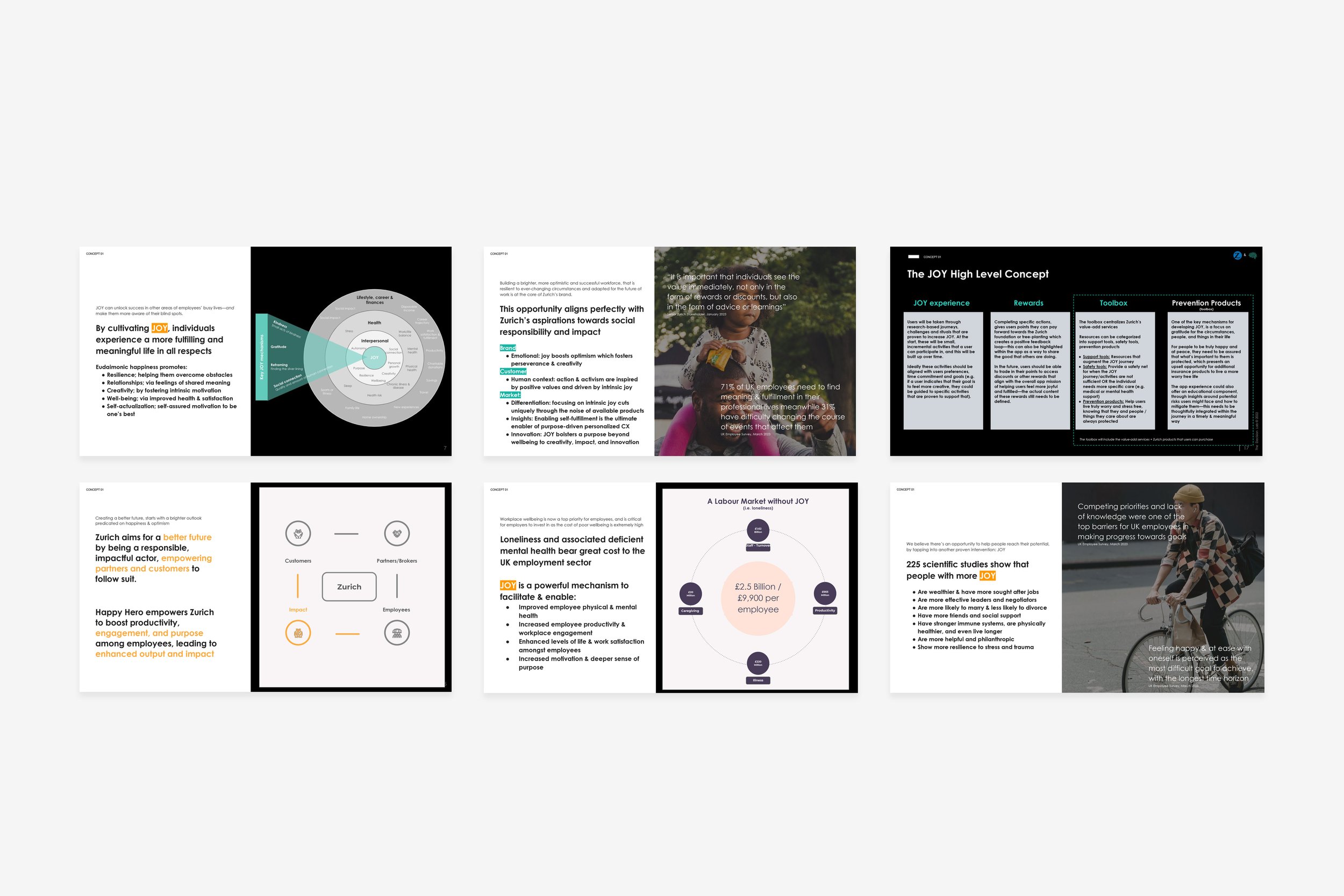
Data analysis

Market analysis
Define—State users’ and business needs and problems
We define the core problems and opportunities:
-
The joy of employees will be seen as a uniquely valuable complement for existing intermediary offerings.
-
Ensuring that employees feel holistically cared for is a key strategic differentiator in the competition for talent amongst employers.
-
Companies have difficulty connecting with their employees and making them feel valued.
Ideate—Challenge Assumptions and Create Ideas
We created two prototypes for user testing:
-
Concept A:
App focused on Life Goals with activities and challenges that help the user save. Set and track big and small life goals. Offer benefits related to goals like mental health counselling, insurance coverage and criss support. -
Concept B:
App focused on Wealth tool with all wealth in one place with local and personalised saving tips. User can track their spending with personalised budget for life goals.

User flow

Design team tasks organization
Prototype—Start to Create Solutions
We assigned 700+ employees to review both concepts, where they were asked to answer questions about the app concepts’ alignment with their needs and lifestyle. They were also asked to answer questions about their feature preferences.
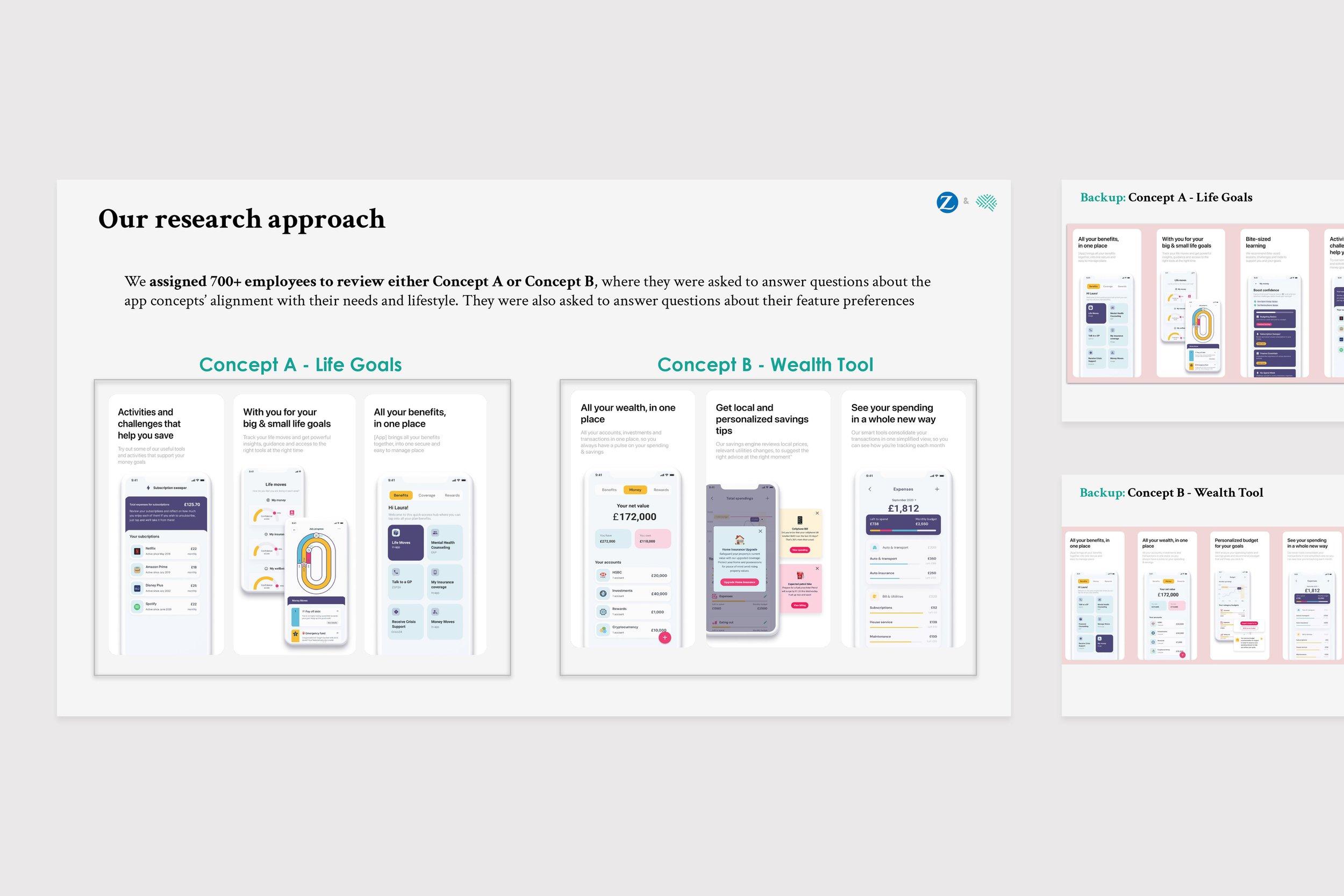
Test—Try the Solutions Out
We conducted new user tests and we obtained the following key insights:
01 The overwhelming majority of participants expressed a willingness to download the app, with no major difference between concept.
02 Despite being exposed to one concept primarily, majority of participants in both groups preferred Concept B when asked to choose between the 2 concepts at the end of the survey.
03 The overwhelming majority of users expressed a positive sentiment over the employer and insurance provider association of the App, with a smaller group indicating that they feel neutral about this connection.
04 There is equal belief amongst respondents evaluating both concepts that there is space for the app to fit within their current routine and/or habits pertaining to their finances and personal life goals.
05 Those who indicated comfortably meeting their needs preferred a wealth building tool, whereas those who may need help maximizing their savings preferred the concept focused on life goals.
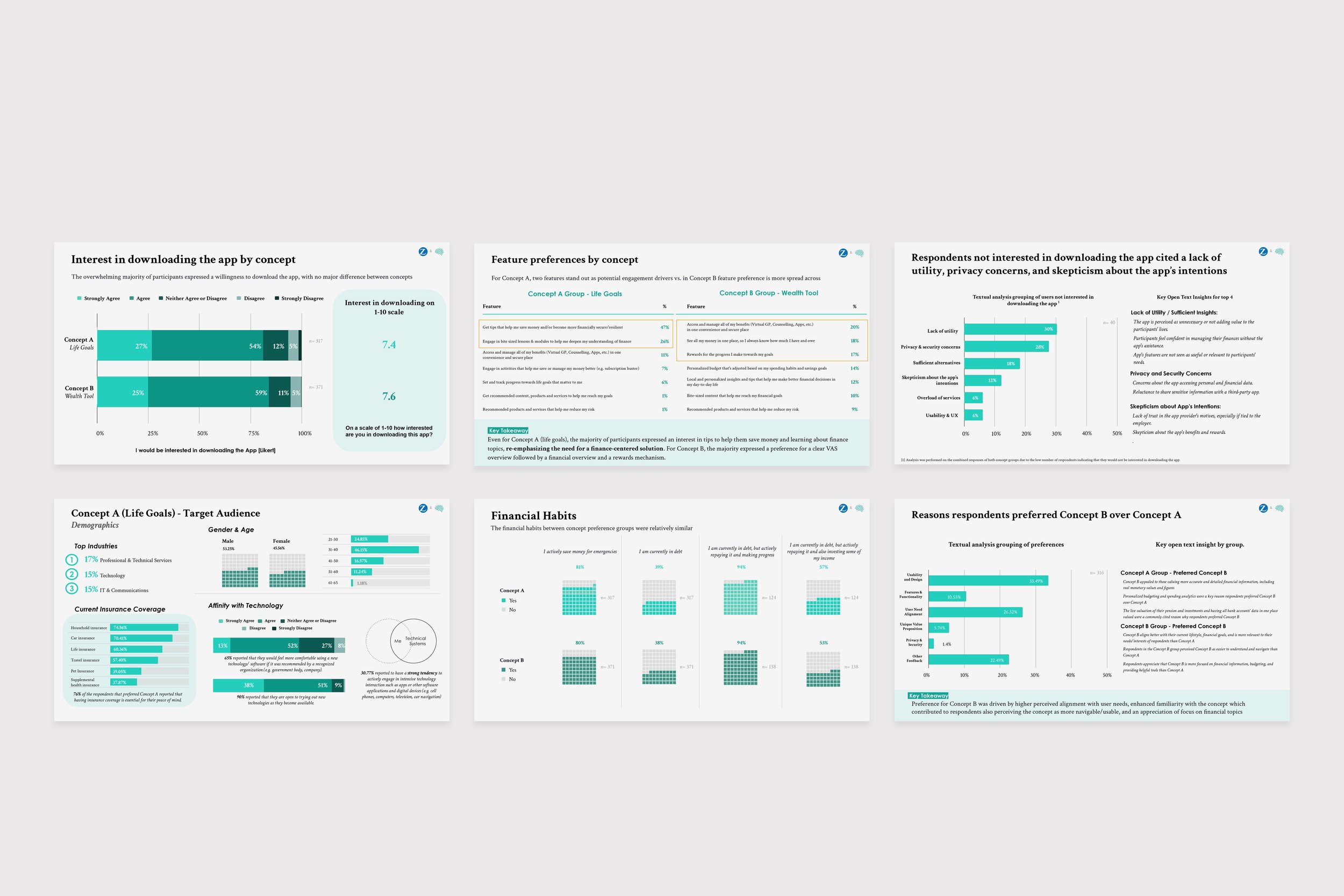
User testing
The first version of the app
After several iterations and several months of production, the first version of the app was launched in the UK market.

App welcome screen
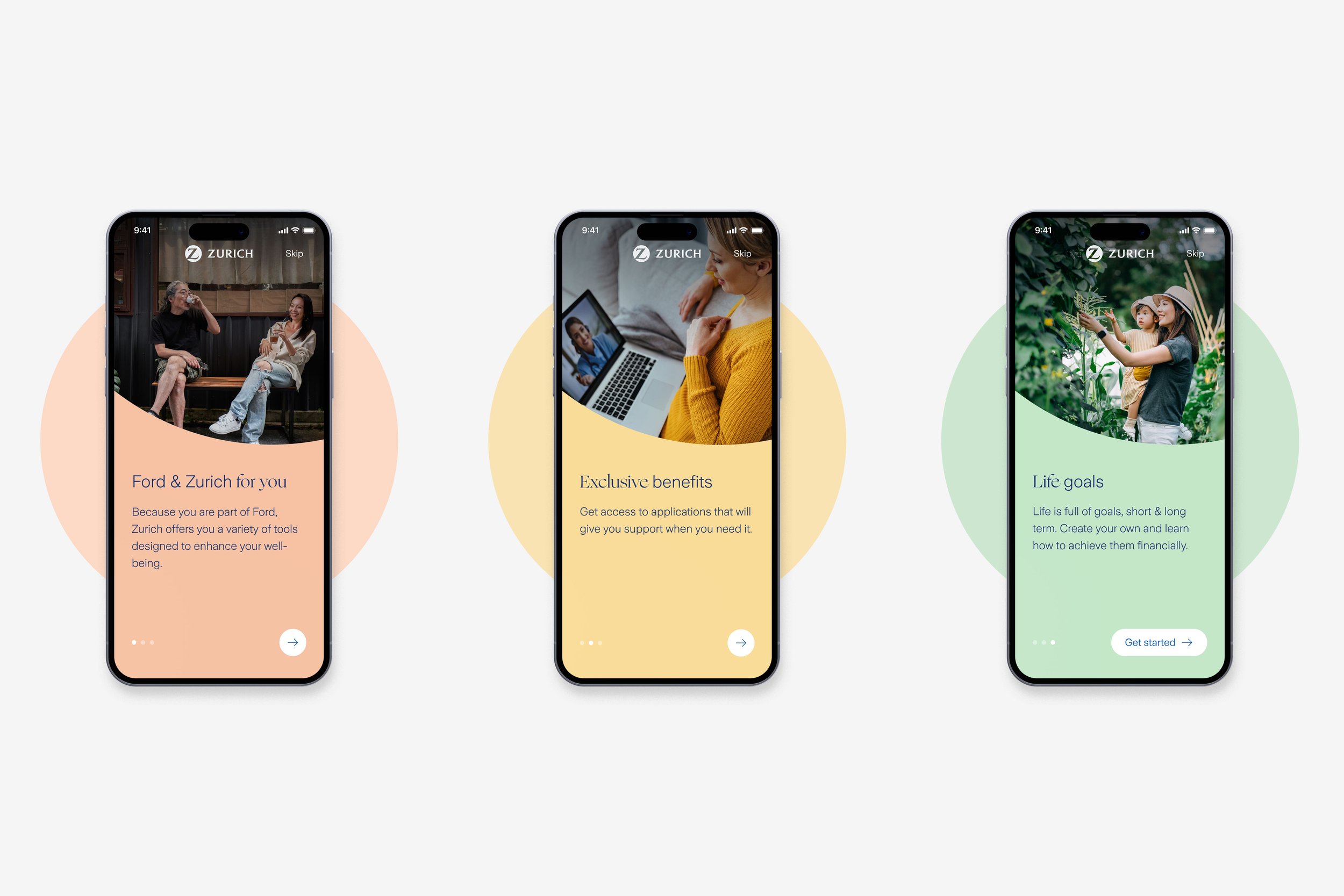
App onboarding
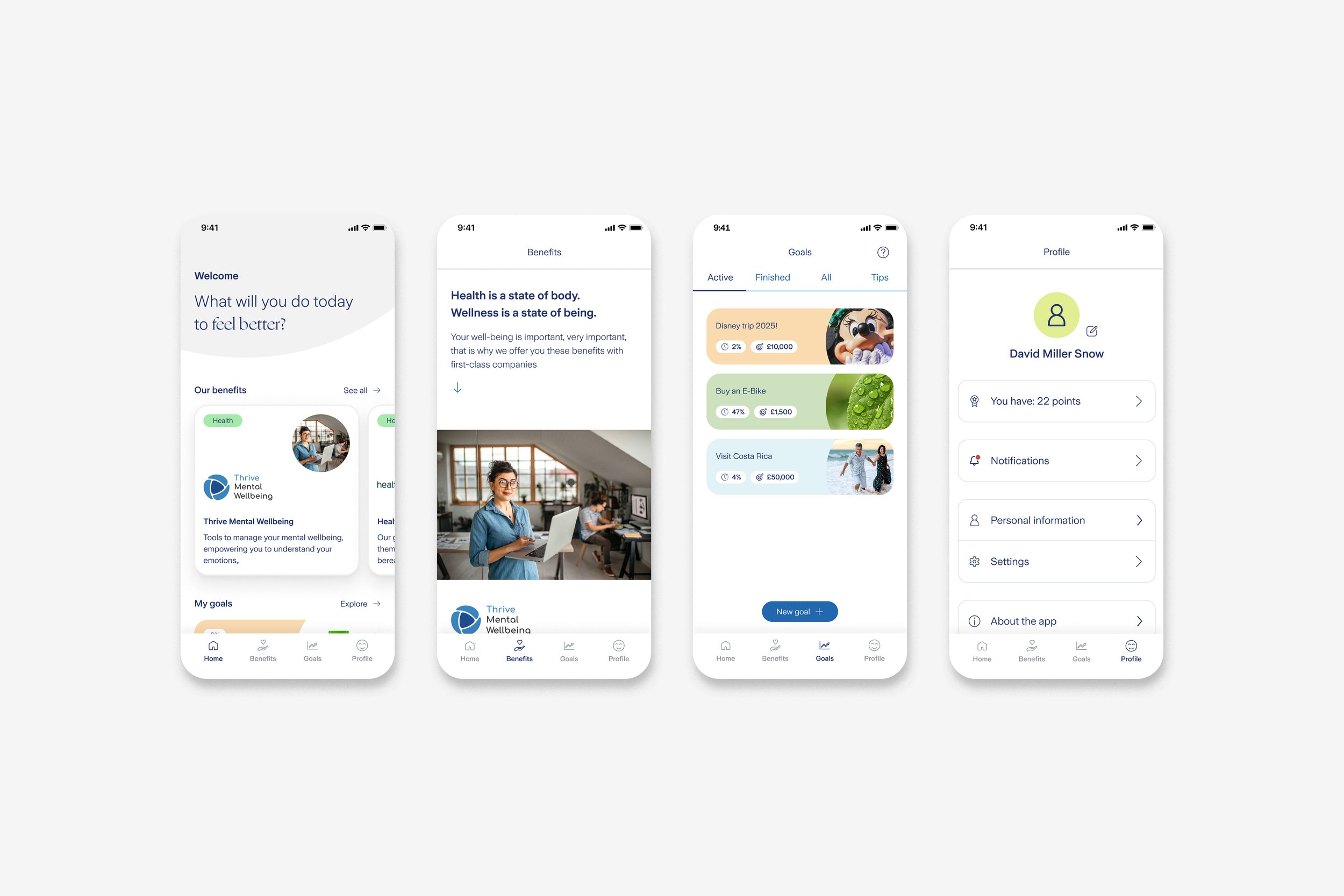
App main tabs
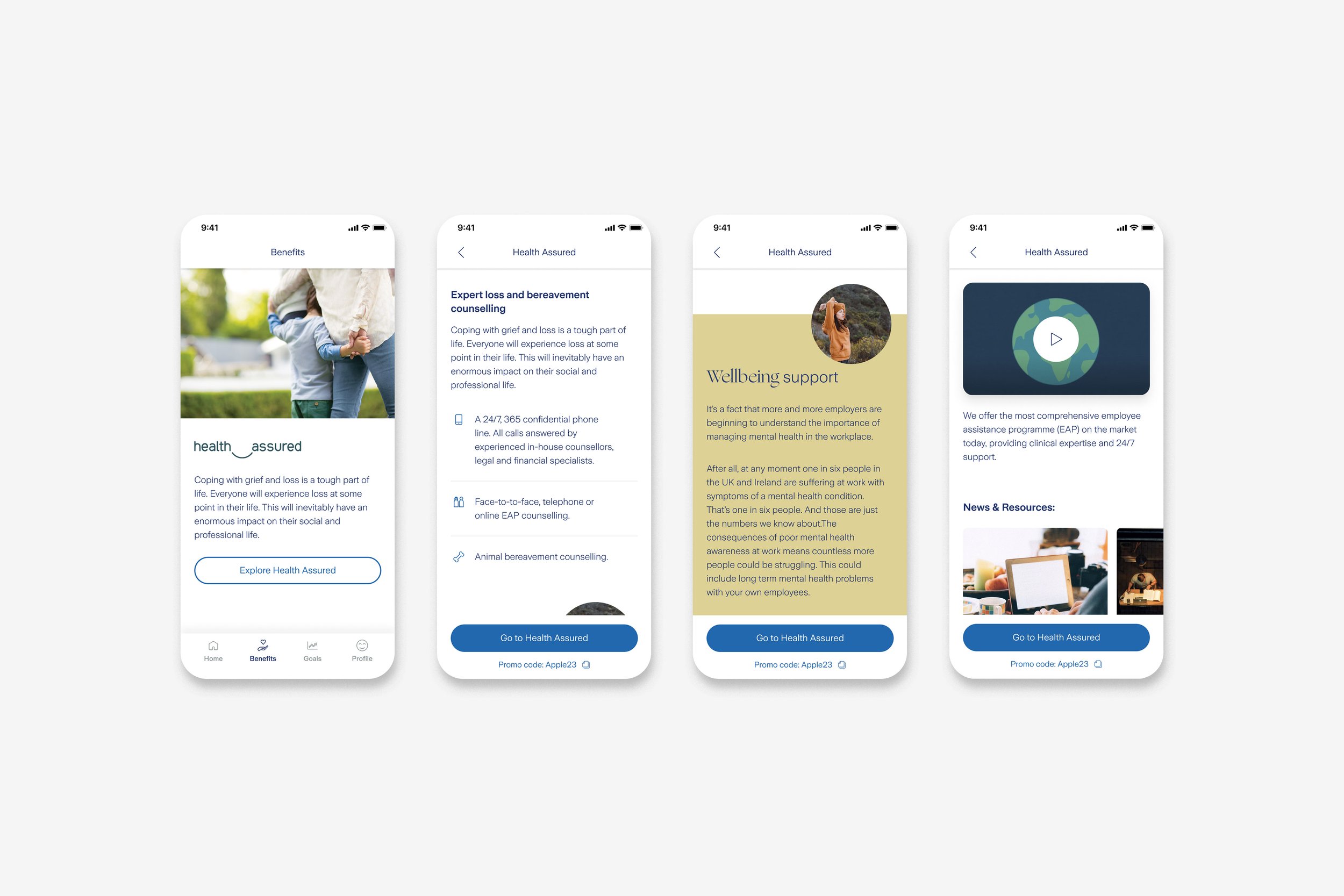
App benefit detail and interaction
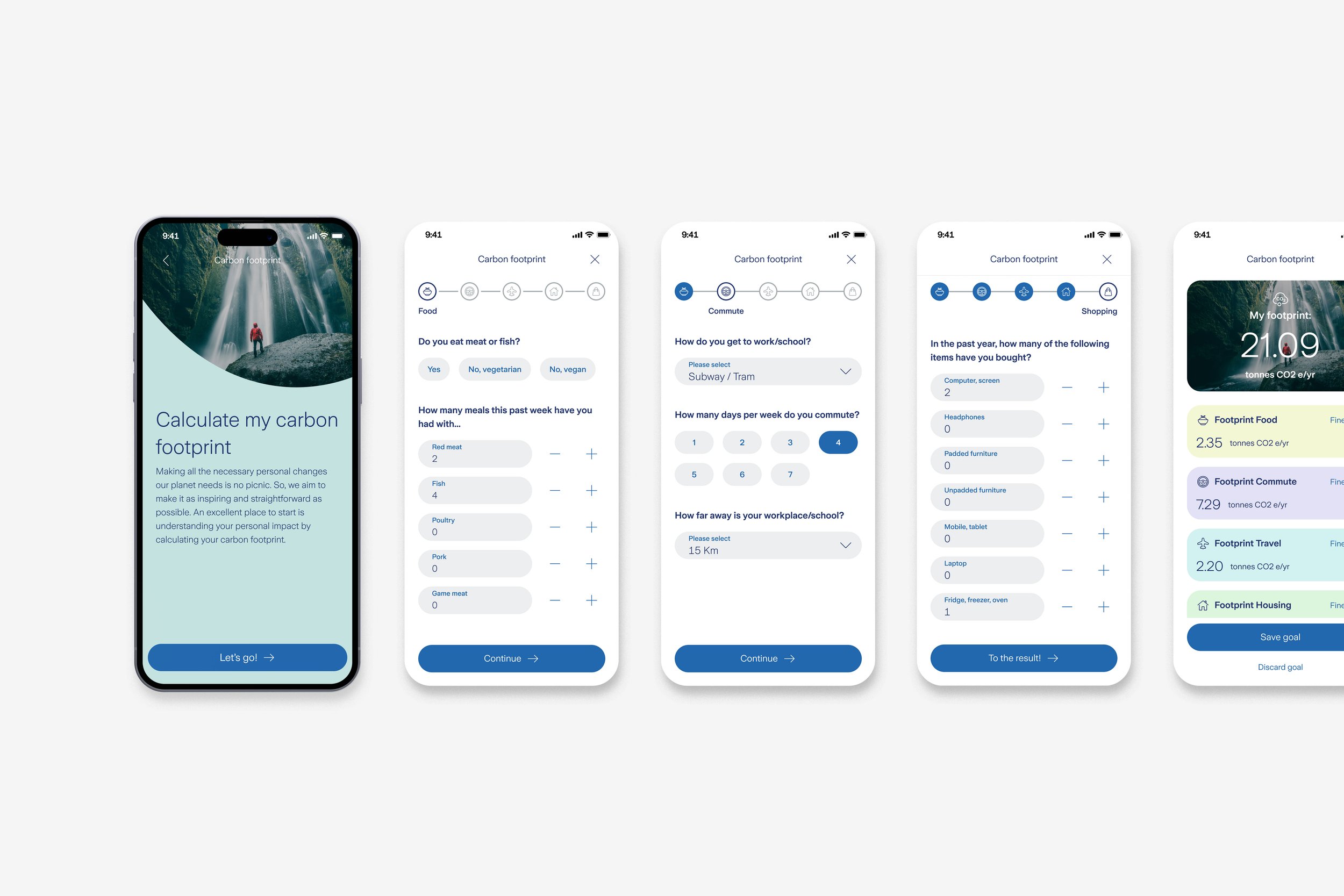
App feature for carbon footprint calculation

App goal tracker
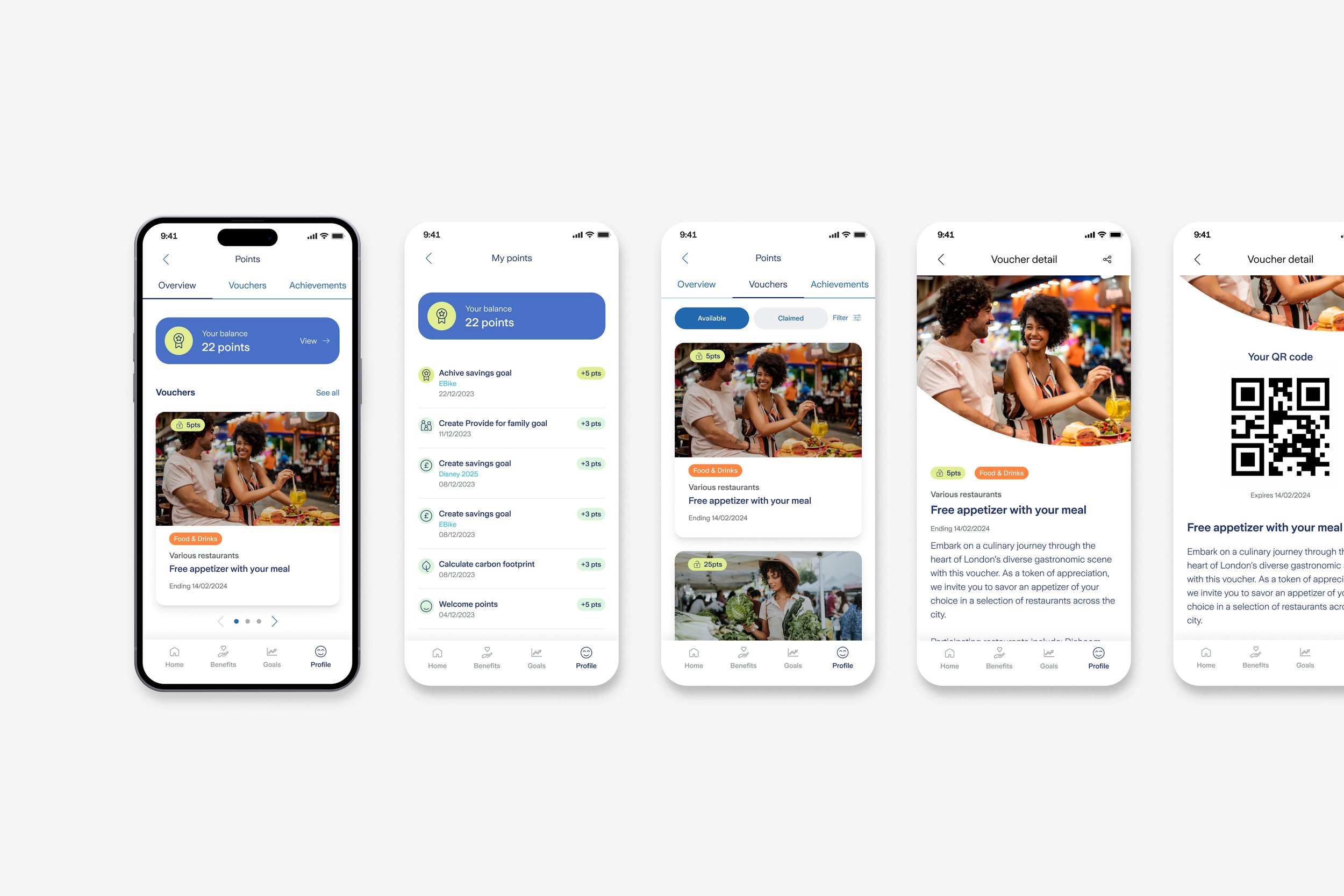
App rewards feature
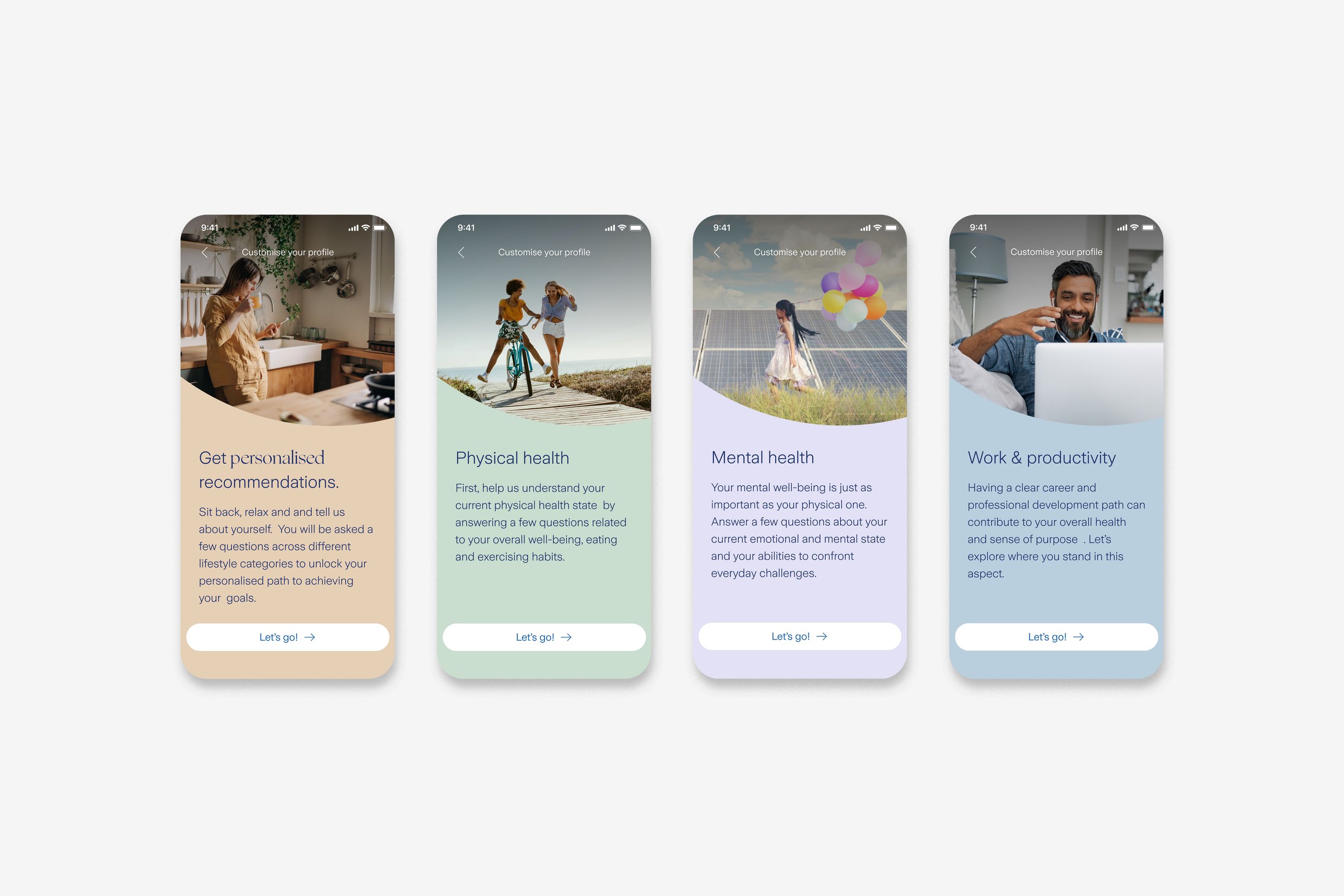
Lifestyle profile
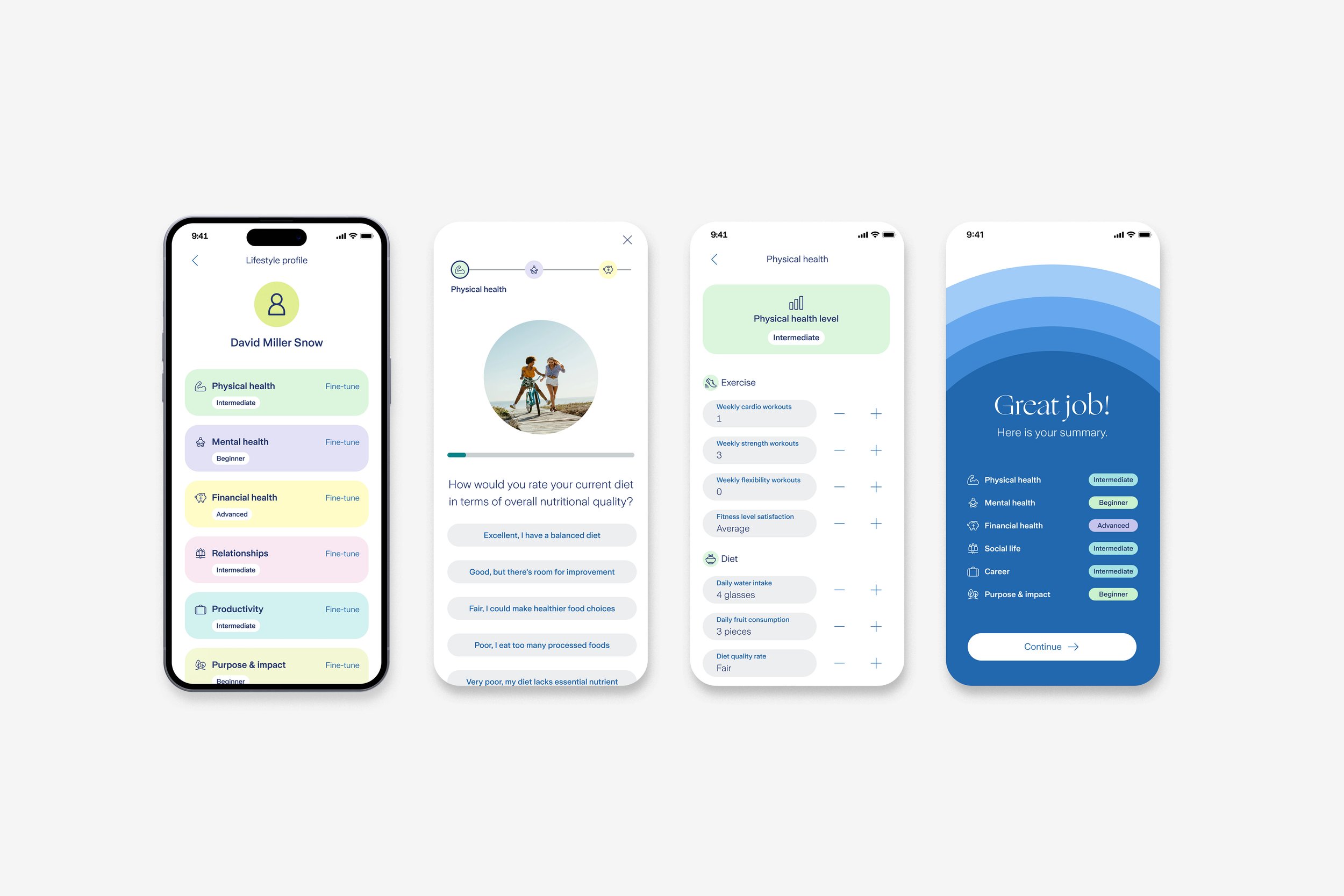
Lifestyle profile

Constant alignment to the Design System
What we have achieved
-
✓
Establish clear objectives thanks to in-depth research and testing. -
✓
Design an app that allows employees to meet both financial and emotional needs. -
✓
Reach agreements with leading companies in the emotional support sector so that users have free access to paid services. -
✓
Strengthen the employee-employer relationship by offering support with emotional and financial issues.
What we have not achieved yet
-
╳
Some users are skeptical about receiving this type of tool; despite finding the features interesting, they showed no interest in interacting with the app. -
╳
For many users, insurance products remain difficult to understand, and they find it difficult to associate an insurance company with their overall well-being. -
╳
Get users to interact with the app organically.
Conclusion
When it comes to personal and sensitive issues like emotional health, it's difficult to design products that help improve people's mood. The market faces ample competition when it comes to apps dedicated to feeling better, relaxing, or finding stability. In the financial sector, banks are making significant progress in creating tools for their customers that help them plan their money, savings, and investments. However, there is a large segment of the market that is willing to provide their employees with tools that allow for better financial and emotional management, and the option to access dedicated services free of charge as part of the company is welcomed.
Next steps
We are gathering data and planning future user tests to understand how users have received the app. From the design department, we've created what we call the UX/UI Lab, where we continually explore new features to enhance our relationship with users.
We currently have the "Programmes" and "Quizzes" features in production. From "Programmes," users can commit to not just one task, but a series of tasks to achieve a larger goal. From "Quizzes," users can easily and interactively demonstrate their knowledge on topics of interest and thus earn points to redeem for rewards.

Programmes feature

Quizzes feature
Note: due to information sensitivity, the data presented here is not 100% accurate, and several processes and screens are not displayed. If you'd like to learn more about this project and my approach, please don't hesitate to get in touch. Thank you.